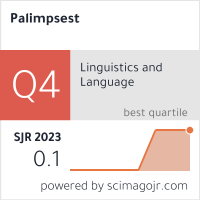POSTMODERN VISIONS OF ROME IN THE GREAT BEAUTY, SUBURRA AND THEY CALL ME JEEG
DOI:
https://doi.org/10.46763/PALIM23815151mAbstract
While it is fair to say that in the last couple of decades the Italian cinema has not reached the same artistic peaks as in some earlier decades of the twentieth century (the Golden Age, the great movie authors of the Sixties and the Seventies, etc.), there have been movies and filmmakers that have managed to be artistically valid and commercially successful in recent years as well. The Great Beauty (2013) by Paolo Sorrentino, Suburra (2015) by Stefano Sollima and They Call Me Jeeg (2015) by Gabriele Mainetti have all taken inspiration from the tradition they belong to (also citing some external sources as well) to bring to fruition their unique artistic visions. What they all have in common is the way they portray the city of Rome, as the ultimate movie location that is inseparable from the human characters in the movies. These movies vary the same motif in specific ways, each staying true to the tradition(s) they are mostly inspired by. The paper will show their major similarities and differences in that regard, with specific attention given to their primary genre and their artistic inclinations towards postmodernism. Their postmodern visions of the city of Rome are particular precisely because of their differences, yet the way they incorporate mythical elements and realism is what ties them together while they try to treat that same city with respect and dignity.
Keywords: contemporary Italian cinema; postmodernism; homage.


